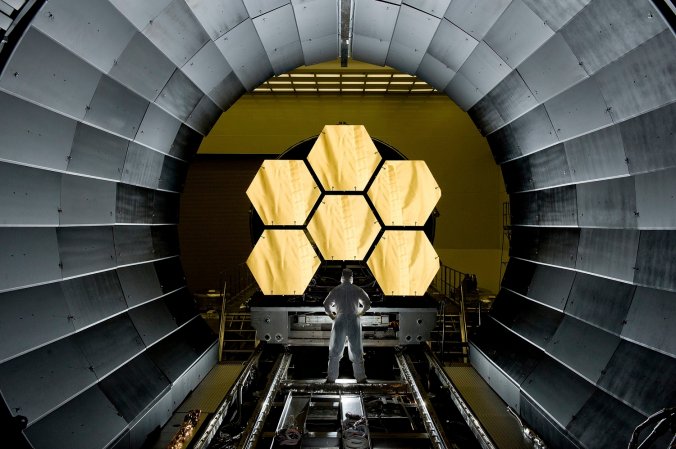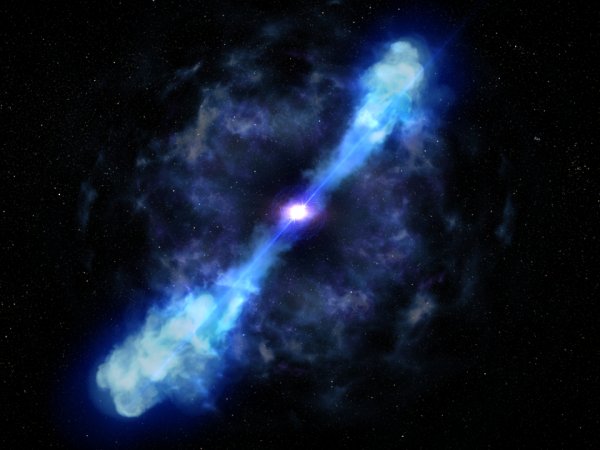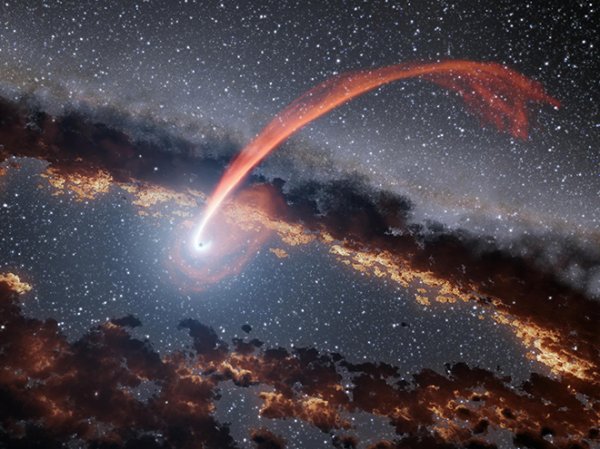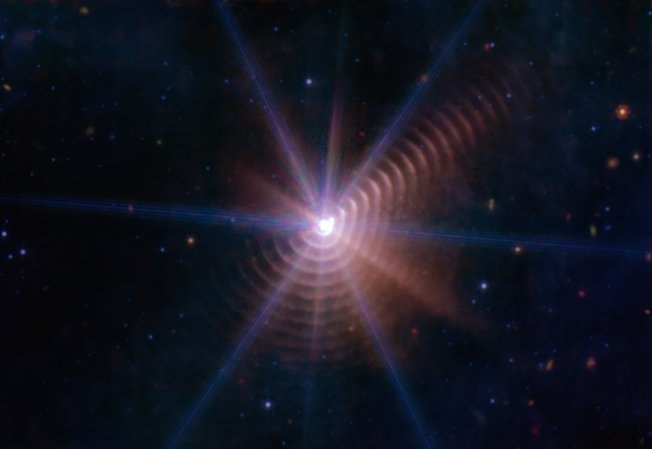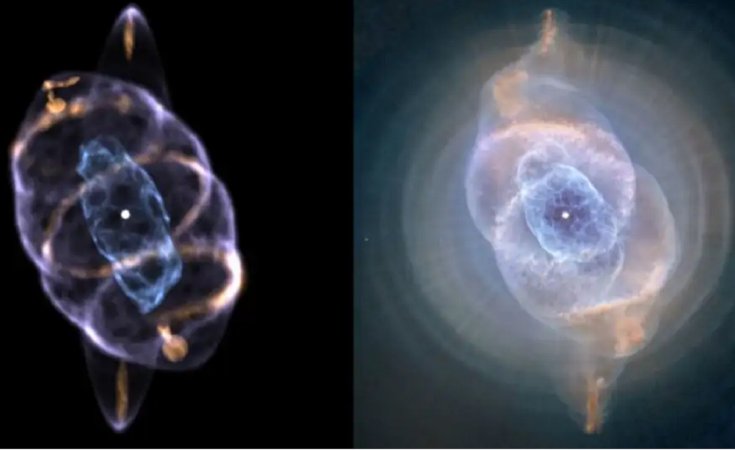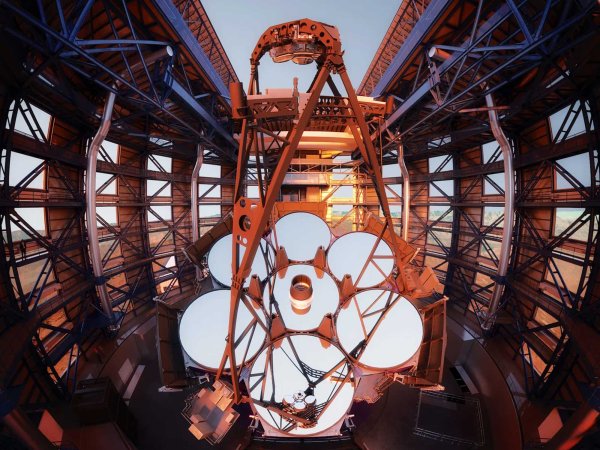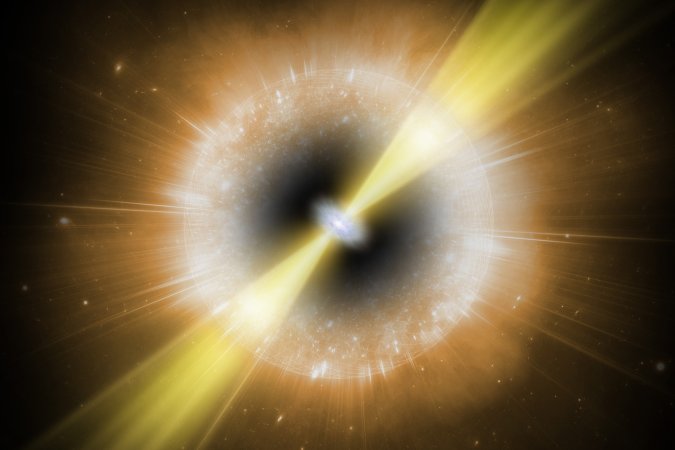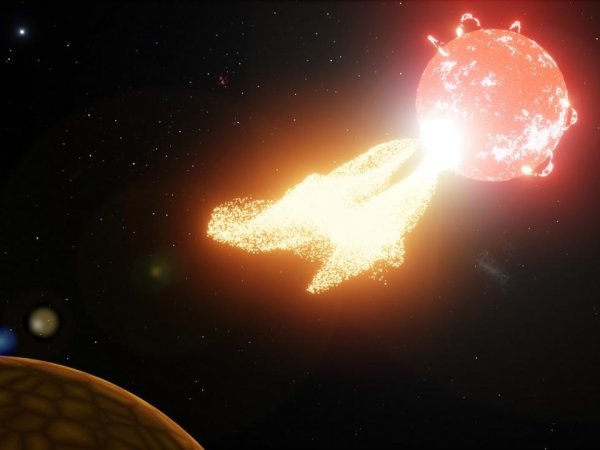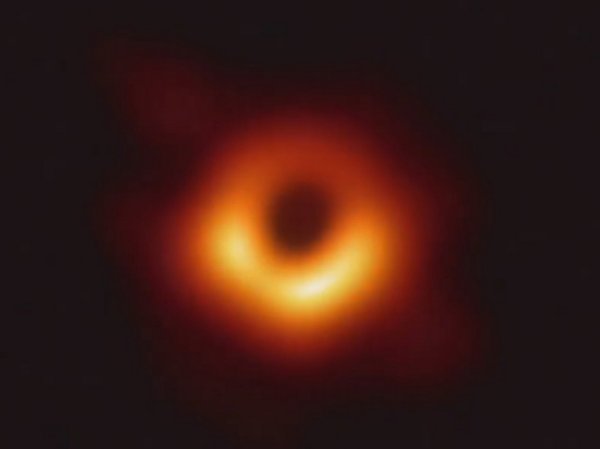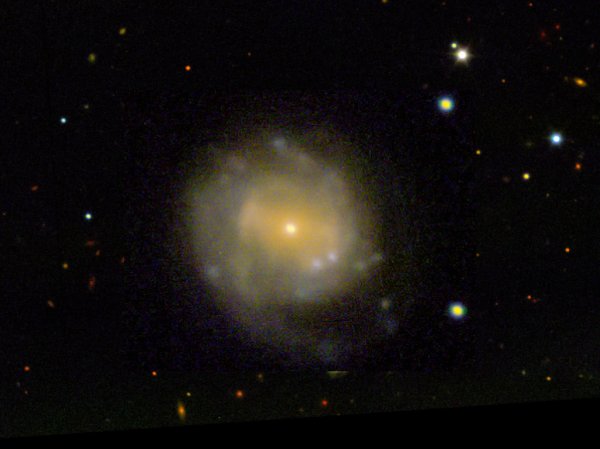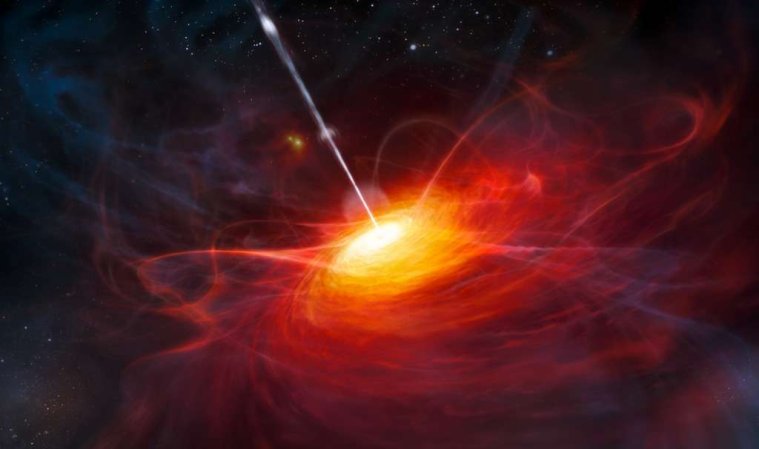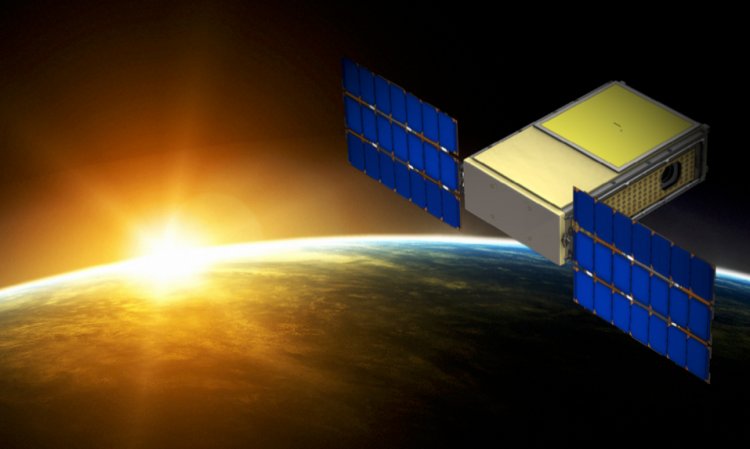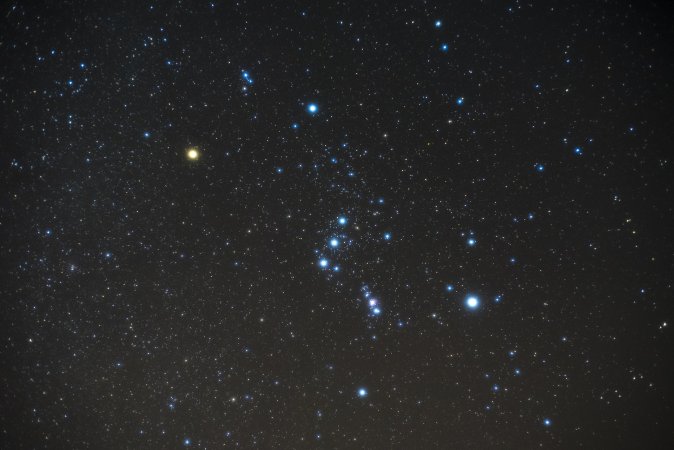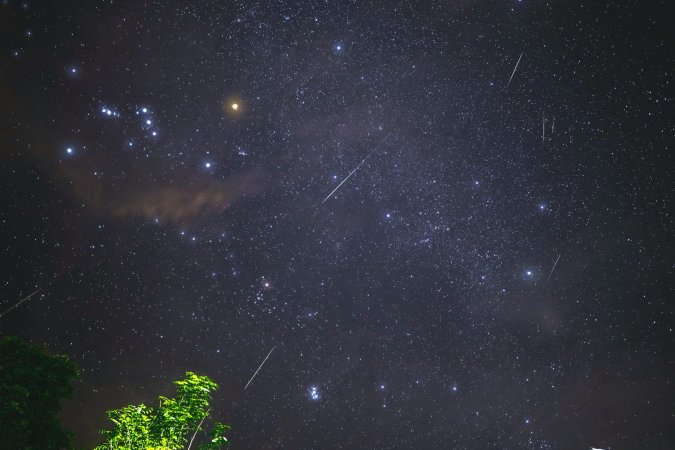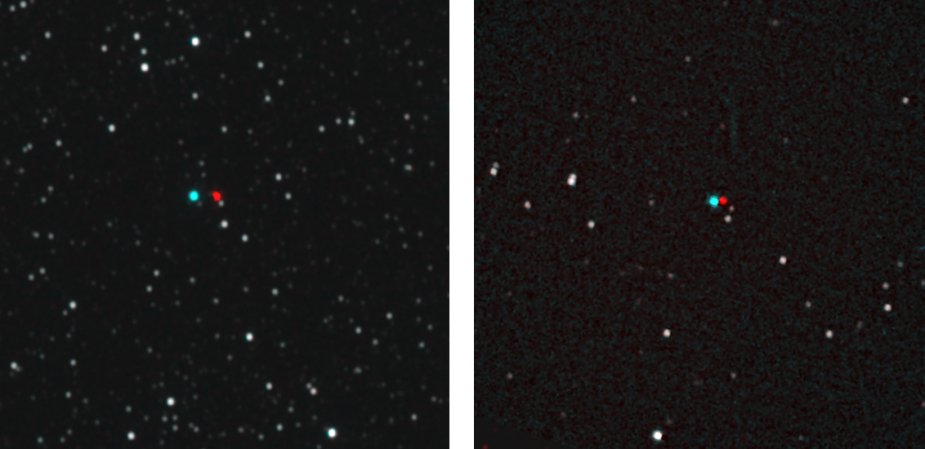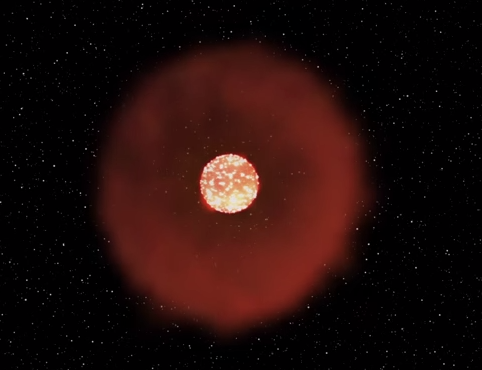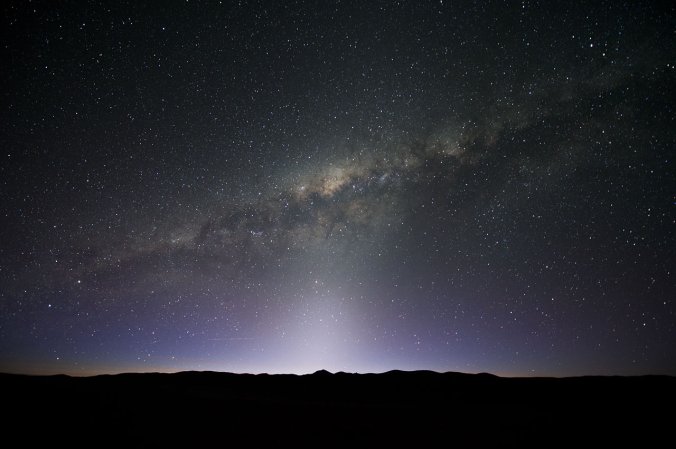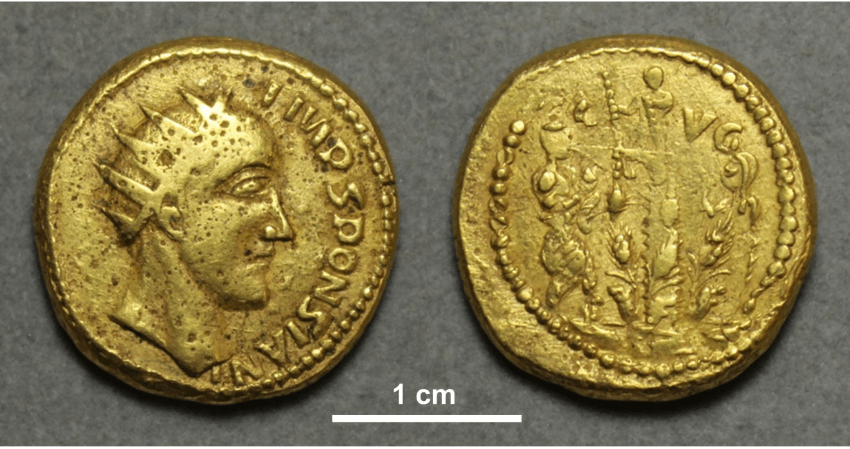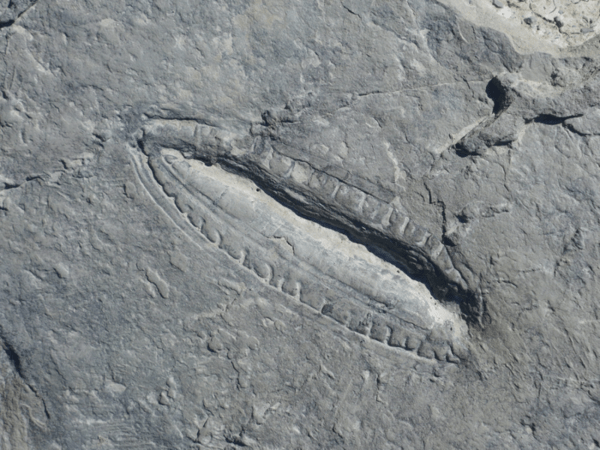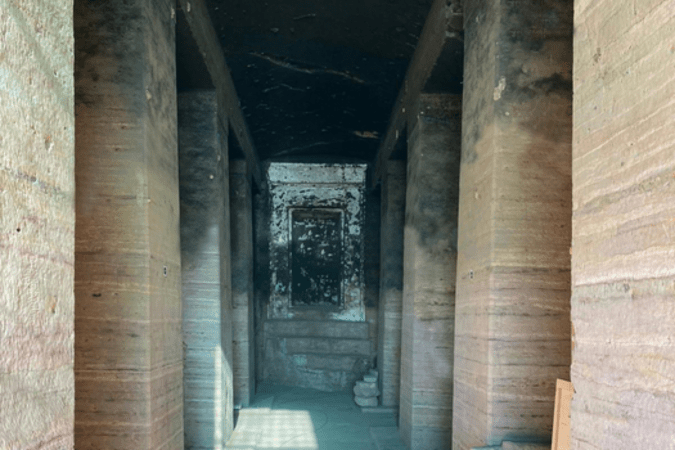

Astronomers recently detected an explosion so large they dubbed it the BOAT—the brightest of all time. This explosion—known now as GRB 221009A—was a gamma-ray burst (GRB), a flash of extremely high-energy light that resulted from the death of a colossal star.
This detonation is the brightest burst at X-ray and gamma-ray energies since human civilization began. It is 70 times brighter than any observed before. Papers describing this result and others related to the burst were published in a focus issue of The Astrophysical Journal Letters in March.
“A burst this bright arrives at Earth only once every 10,000 years,” says Eric Burns, a Louisiana State assistant professor and astronomer involved in the detection.
[Related: Black hole collisions could possibly send waves cresting through space-time]
So-called long GRBs—gamma-ray bursts that last longer than two seconds—materialize when a massive star runs out of fuel and collapses into a black hole. This catastrophic collapse causes powerful jets of material to stream out, collide with gas around the former star, and produce high-energy gamma rays. We can see this explosion from Earth if the jet is pointed directly at our planet.

Astronomers are constantly monitoring the sky for GRBs and other bright, short-lived bursts of light—and that’s how they found the BOAT. The research team that works with NASA’s Neil Gehrels Swift Observatory, is notified each time a certain camera, known as the Burst Alert Telescope (BAT), spots a new GRB.
“This one was bright enough to trigger BAT twice,” says Maia Williams, a Penn State astronomer and lead author of one of the GRB 221009A papers.
The initial detection of the burst was based on data gathered from the Ultraviolet/Optical Telescope onboard SWIFT and NASA’s Fermi Gamma-ray Space Telescope. After “it was seen by instruments on more than two dozen satellites,” explains Burns. These include the NICER x-ray telescope on the International Space Station, NASA’s NuSTAR x-ray telescope, NASA’s new Imaging X-ray Polarimetry Explorer (IXPE) satellite, and even one of the Voyager spacecraft.
With this vast trove of information on the BOAT, astronomers realized it was a “more-complicated-than-usual GRB,” says Huei Sears, a Northwestern University astronomer and graduate student not involved in the discovery.

Why was the BOAT so bright? First, it’s nearby (in cosmic terms, about 1.9 billion light-years away), which adds to its extreme shine—just like a light bulb appears brighter to your eyes closer up than across a room. But its brightness isn’t just a quirk of its proximity. It’s also “intrinsically the most energetic burst ever seen,” says Burns.
Astronomers suspect the jets blasted out of the black hole that created the BOAT were narrower than usual. Imagine the jet setting on a garden hose—and by lucky coincidence this particular hose was aimed directly at Earth. However, why these jets behaved like this is not understood.
“Scientifically, the BOAT has proven most of our existing models for these events to be incomplete,” says Burns.
[Related: Astronomers now know how supermassive black holes blast us with energy]
Gamma-ray bursts are at their brightest in their first moments but continue with an afterglow for much longer—possibly several years in the case of the BOAT. Williams and her team plan to continue observing the BOAT once a week with SWIFT as long as they can. They’ll also use NASA’s powerhouse James Webb and Hubble space telescopes to get a look at other wavelengths, capturing as much as they can from this rare happening.
“The BOAT is so important because it is one of those events that breaks what we know,” says Sarah Dalessi, a University of Alabama astrophysicist and graduate student involved in the detection. “This is truly a once-in-a-lifetime event.”

